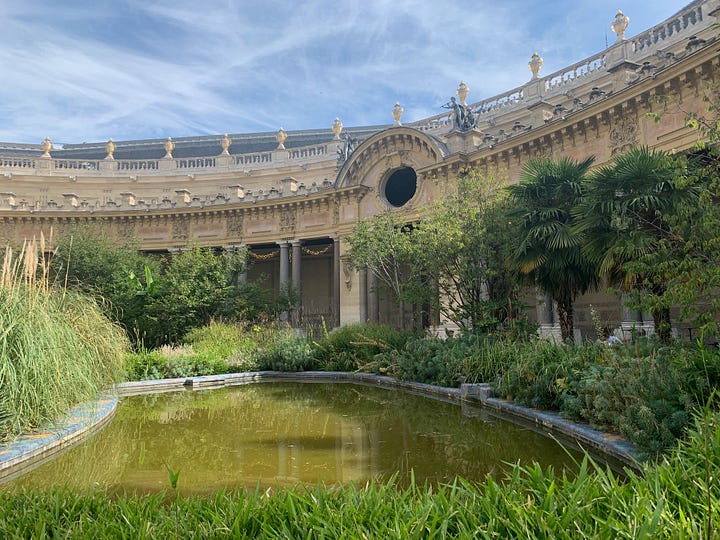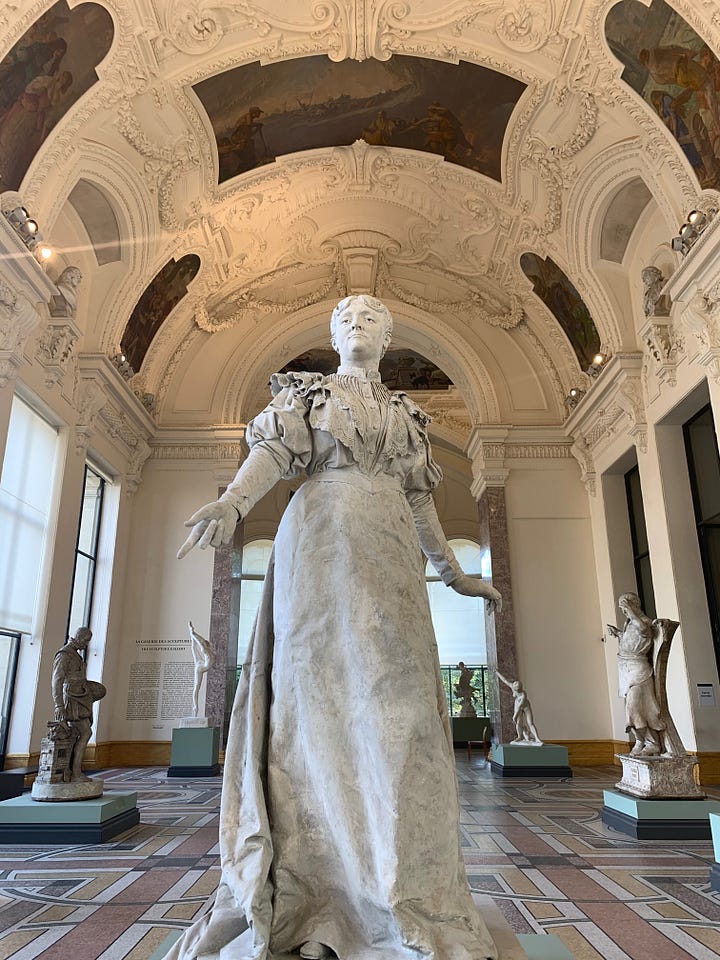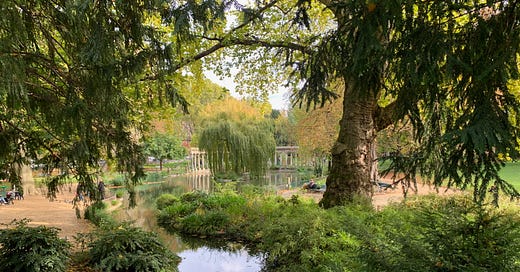Monet and Parc Monceau
notes from the loveliest park in Paris...and Parc Monceau in film
What an elliptical path lacks in mystery, it makes up for in certainty. During a time in my life when I was often lost, on the path of Parc Monceau, I always ended up right where I started.
I was cleaning out the basement last week when I stumbled upon a notebook from Paris that I’d forgotten. The cover of the notebook features Claude Monet’s Soleil couchant Sur la Sene a Lavacourt, effet d’hiver (1880), and the label on the back says Petit Palais; I must have purchased it in the gift shop. I have notebooks from museum gift shops and bookstores all over Europe, going back to the early nineties. But I have more notebooks from Paris than anywhere else, purchased and partially filled in during the strangely compressed years of 2018-2020. Most contain a few dozen pages of writing. Invariably I lose every notebook, then find it months or years later. Rediscovering these notebooks is a bit like time travel.
I love the Petit Palais, which is more grand than its name suggests yet smaller than the Grand Palais directly across the street. I visited often to browse the small collection and sit in the peaceful green courtyard, which had a pond that was sometimes clear but more often green, as are so many of the ponds in Paris.


There are only three entries in the Petit Palais notebook. The first is dated August 30, 2019, and was written in Parc Monceau, which was only a block and a half from our apartment. I went to Parc Monceau almost daily to walk and sometimes to write. The August 30th entry is the beginning of a novel. The first sentence is, “It begins like this.” Well, I suppose that’s one way to start, if a bit obvious. How did it end? Your guess is as good as mine.
During the years that I was walking and writing and thinking in Parc Monceau, I didn’t realize that Monet painted three scenes of Parc Monceau in the spring of 1876 and three more in 1878. At the time, Monet was struggling financially, selling his paintings for as little as 100 francs each.





